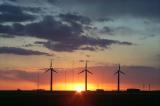Renewable energy supplied an estimated 16% of global final energy consumption; Emerging and developing economies show rising share of renewables policies, investment, supply, and use
 Washington, D.C.—-The newly released REN21 Renewables 2011 Global Status Report shows that the renewable energy sector continues to perform well despite continuing economic recession, incentive cuts, and low natural gas prices.
Washington, D.C.—-The newly released REN21 Renewables 2011 Global Status Report shows that the renewable energy sector continues to perform well despite continuing economic recession, incentive cuts, and low natural gas prices.
Authored by Worldwatch Institute Senior Fellow Janet Sawin in collaboration with a global network of research partners, the report shows that in 2010, renewable energy supplied an estimated 16% of global final energy consumption and delivered close to 20% of global electricity production. Renewable capacity now comprises about a quarter of total global power-generating capacity. Including large and small hydropower (an estimated 30 GW added in 2010), renewable energy accounted for approximately 50% of total added power-generating capacity in 2010. In 2010, existing solar water and space heating capacity increased by an estimated 25 gigawatts-thermal (GWth), or about 16%.
The report was commissioned by the Paris-based Renewable Energy Policy Network for the 21st Century, or REN21 (www.ren21.net). Sawin was the lead author of the report, which in recent years has become the industry standard for information on the global renewable energy industry. Worldwatch staff Matthias Kimmel and Will Bierbower, Senior Editor Lisa Mastny, Senior Fellow Eric Martinot, and Director of Climate & Energy Alexander Ochs also contributed to the coordination, research, writing, and editing of the report.
“The Global Status Report shows that despite the recession, renewables are growing at an enormous rate,” said Ochs. “Still, there are 1.5 billion people who don’t have any access to energy, and 3 billion people relying on traditional biomass sources and coal. If we want to prevent climate change from spinning out of control, we need to scale up our efforts to accelerate renewable energy development and deployment at all levels. Worldwatch will continue to provide guidance as to how this can be done.”
Renewable energy policies continue to be the main driver behind renewables growth. By early 2011, at least 119 countries had some type of policy target or renewable support policy at the national level, more than doubling from 55 countries in early 2005. More than half of these countries are in the developing world. At least 95 countries now have some type of policy to support renewable power generation. Of all the policies employed by governments, feed-in tariffs remain the most common. Last year, investment in renewables reached a record $211 billion-about one-third more than the $160 billion invested in 2009 and more than five times the amount invested in 2004.
Money invested in renewable energy companies, utility-scale generation, and biofuel projects increased to $143 billion, with developing countries surpassing developed economies for the first time, as shown in the Global Status Report’s recently released companion report, UNEP’s Global Trends in Renewable Energy Investment 2011. China attracted $48.5 billion, or more than a third of the global total, but other developing countries also experienced major developments in terms of policies, investments, market trends, and manufacturing.
Further Highlights from the Report:
* Renewable capacity now comprises about a quarter of total global power-generating capacity and supplies close to 20% of global electricity, with most of this provided by hydropower.
* Developing countries (collectively) have more than half of global renewable energy power.
* Solar PV capacity was added in more than 100 countries.
* The top five countries for non-hydro renewable power capacity were the United States, China, Germany, Spain, and India.
* In the United States, renewables accounted for about 10.9% of U.S. domestic primary energy production (compared with nuclear’s 11.3%), an increase of 5.6% over 2009.
* In the United States, 30 states (plus Washington, D.C.) have Renewable Portfolio Standards (RPS).
* China led the world in the installation of wind turbines and solar thermal systems and was the top hydropower producer in 2010. The country added an estimated 29 GW of grid-connected renewable capacity, for a total of 252 GW, an increase of 13% compared with 2009.
* Renewables accounted for about 26% of China’s total installed electric capacity in 2010, 18% of generation, and more than 9% of final energy supply.
* Brazil produces virtually all of the world’s sugar-derived ethanol and has been adding new hydropower, biomass, and wind power plants, as well as solar heating systems.
* In the European Union, renewables represented an estimated 41% of newly installed electric capacity. While this share was significantly lower than the more than 60% of new capacity in 2009, more renewable power capacity was added in Europe than ever before.
* The EU exceeded its 2010 targets for wind, solar PV, concentrating solar thermal power, and heating/heat pumps. Countries including Finland, Germany, Spain, and Taiwan raised their targets, and South Africa, Guatemala, and India, among others, introduced new ones.
* Developing countries, which now represent more than half of all countries with policy targets and half of all countries with renewable support policies, are playing an increasingly important role in advancing renewable energy.
* REN21 has also launched its Renewables Interactive Map, a streamlined tool for gathering and sharing information online about developments related to renewable energy, at www.map.ren21.net
A full copy of the Global Status Report can be downloaded here.
 Alternative Energy HQ solar power for homes, wind energy, and bio fuel issues
Alternative Energy HQ solar power for homes, wind energy, and bio fuel issues






